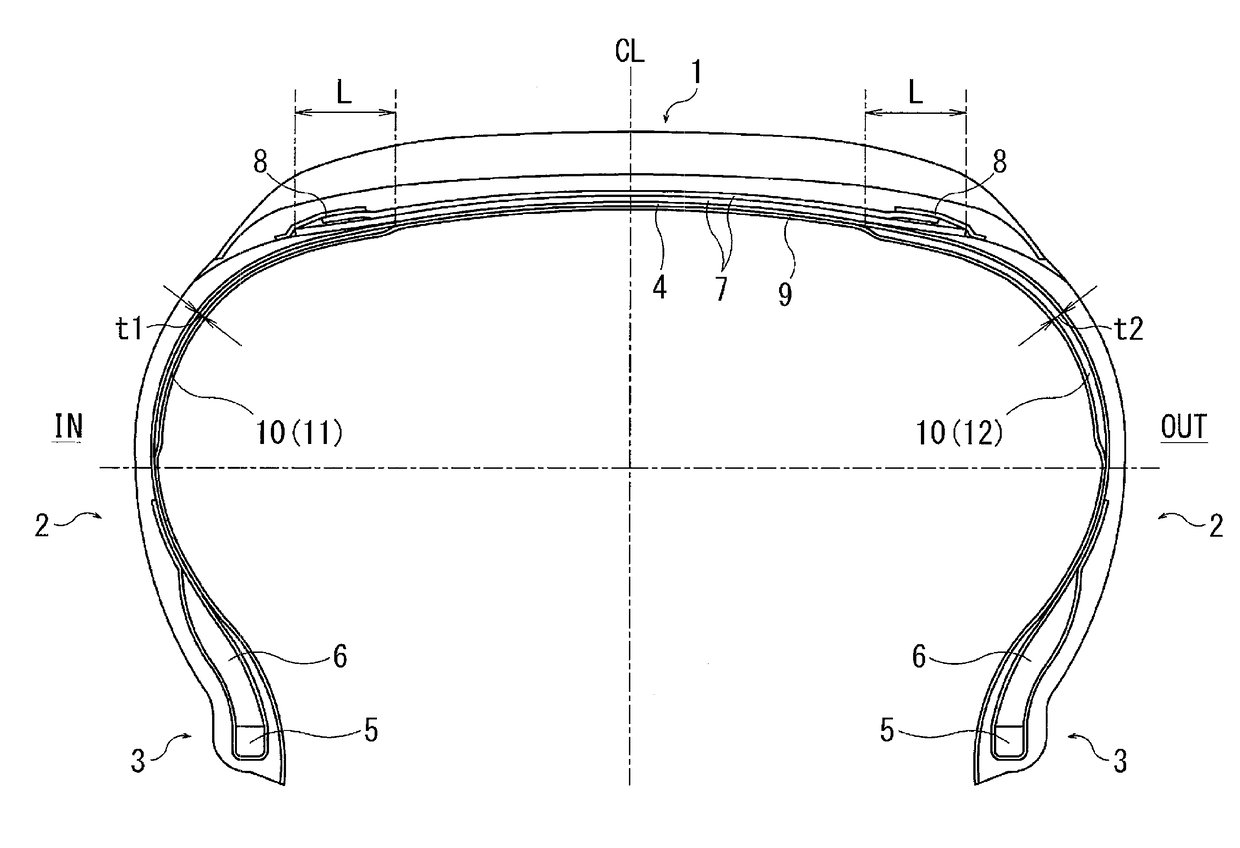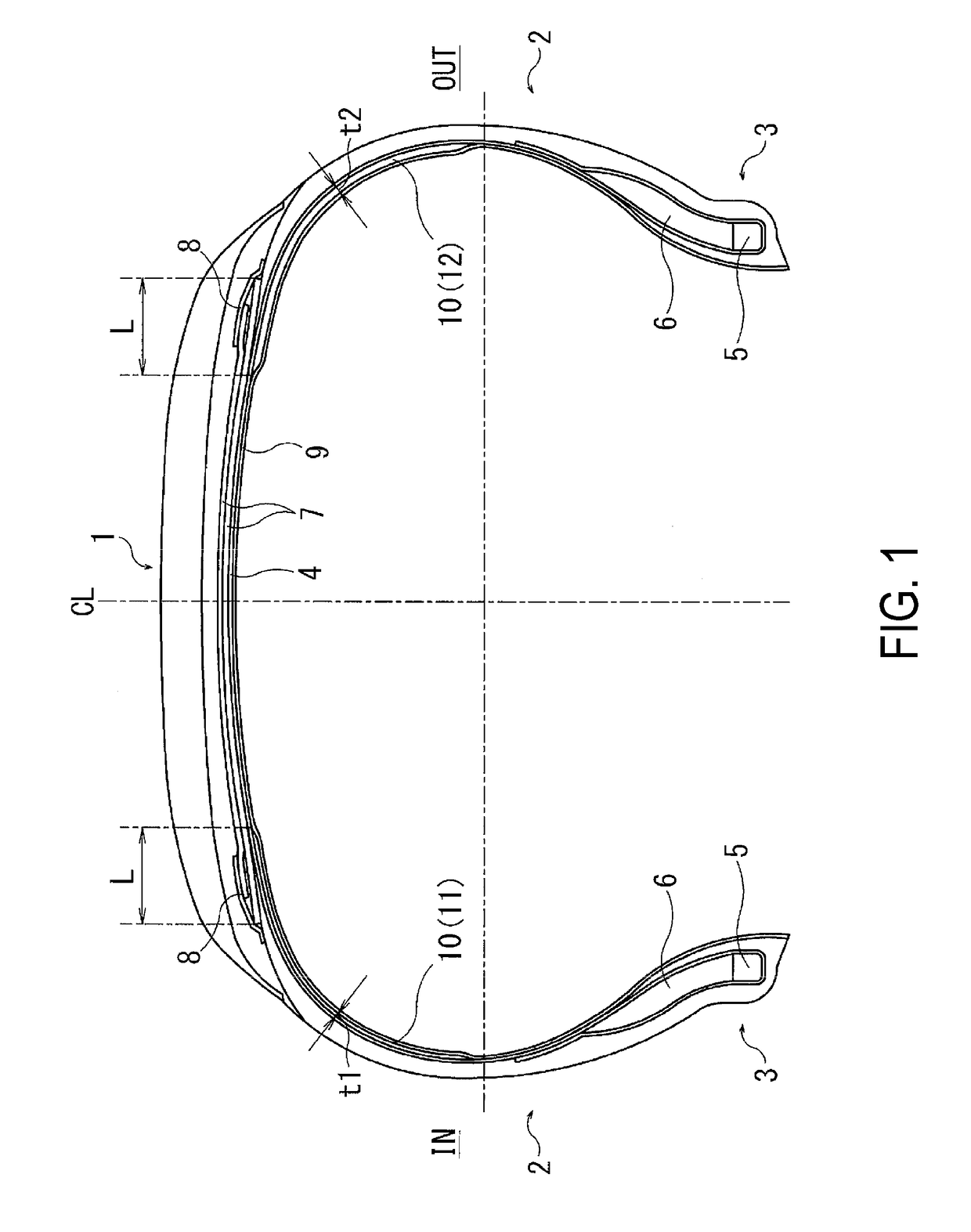Pneumatic Tire
a pneumatic tire and tire body technology, applied in the field of pneumatic tires, can solve the problems of reduced rigidity and difficulty in sufficiently maintaining handling stability performance (dry handling stability), and achieve the effects of reducing tire weight and rolling resistance, increasing rigidity of the sidewall portion on the vehicle outer side, and maintaining dry handling stability at a high degr
- Summary
- Abstract
- Description
- Claims
- Application Information
AI Technical Summary
Benefits of technology
Problems solved by technology
Method used
Image
Examples
examples
[0033]45 types of pneumatic tires of Conventional Example 1, Comparative Examples 1 to 7, and Examples 1 to 37 were prepared, having a tire size of 195 / 65 R15, having the basic structure common to FIGS. 1 to 4, and for a partial tie rubber layer, the following were set as shown in Tables 1 to 3: rubber thickness t1 of an inner tie rubber layer; rubber thickness t2 of an outer tie rubber layer; ratio (t2 / t1×100) of the rubber thickness t2 with regard to the rubber thickness t1; periphery length x1 of the inner tie rubber layer; periphery length x2 of the outer tie rubber layer; difference Δx between the periphery length x1 of the inner tie rubber layer and periphery length x2 of the outer tie rubber layer; ratio of the difference Δx of the periphery length with regard to a periphery length X of a tire inner surface from a bead toe to a tire equator; rubber hardness h1 of the inner tie rubber layer; rubber hardness h2 of the outer tie rubber layer; and ratio of the rubber hardness h2 ...
PUM
 Login to View More
Login to View More Abstract
Description
Claims
Application Information
 Login to View More
Login to View More - R&D
- Intellectual Property
- Life Sciences
- Materials
- Tech Scout
- Unparalleled Data Quality
- Higher Quality Content
- 60% Fewer Hallucinations
Browse by: Latest US Patents, China's latest patents, Technical Efficacy Thesaurus, Application Domain, Technology Topic, Popular Technical Reports.
© 2025 PatSnap. All rights reserved.Legal|Privacy policy|Modern Slavery Act Transparency Statement|Sitemap|About US| Contact US: help@patsnap.com



